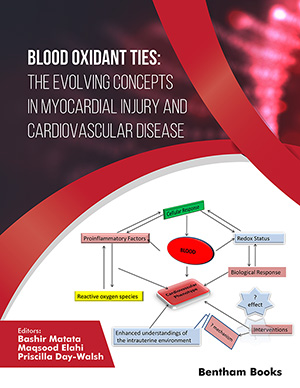Abstract
The ribonucleic acid (RNA)-binding protein Cytoplasmic Polyadenylation Element Binding Protein 1 (CPEB1), a key member of the CPEB family, is essential in controlling gene expression involved in both healthy physiological and pathological processes. CPEB1 can bind to the 3'- untranslated regions (UTR) of substrate messenger ribonucleic acid (mRNA) and regulate its translation. There is increasing evidence that CPEB1 is closely related to the pathological basis of atherosclerosis. According to recent investigations, many pathological processes, including inflammation, lipid metabolism, endothelial dysfunction, angiogenesis, oxidative stress, cellular senescence, apoptosis, and insulin resistance, are regulated by CPEB1. This review considers the prevention and treatment of atherosclerotic heart disease in relation to the evolution of the physiological function of CPEB1, recent research breakthroughs, and the potential participation of CPEB1 in atherosclerosis.
Keywords: Atherosclerosis, mRNA binding protein, CPEB1, oxidative stress, apoptosis, insulin resistance.
Current Vascular Pharmacology
Title:Cytoplasmic Polyadenylation Element Binding Protein 1 and Atherosclerosis: Prospective Target and New Insights
Volume: 22 Issue: 2
Author(s): Jing Zhou and Chao-Ke Tang*
Affiliation:
- Institute of Cardiovascular Disease, Key Laboratory for Arteriosclerology of Hunan Province, School of Pharmacology, Hengyang Medical School, University of South China, Hengyang, Hunan 421001, China
Keywords: Atherosclerosis, mRNA binding protein, CPEB1, oxidative stress, apoptosis, insulin resistance.
Abstract: The ribonucleic acid (RNA)-binding protein Cytoplasmic Polyadenylation Element Binding Protein 1 (CPEB1), a key member of the CPEB family, is essential in controlling gene expression involved in both healthy physiological and pathological processes. CPEB1 can bind to the 3'- untranslated regions (UTR) of substrate messenger ribonucleic acid (mRNA) and regulate its translation. There is increasing evidence that CPEB1 is closely related to the pathological basis of atherosclerosis. According to recent investigations, many pathological processes, including inflammation, lipid metabolism, endothelial dysfunction, angiogenesis, oxidative stress, cellular senescence, apoptosis, and insulin resistance, are regulated by CPEB1. This review considers the prevention and treatment of atherosclerotic heart disease in relation to the evolution of the physiological function of CPEB1, recent research breakthroughs, and the potential participation of CPEB1 in atherosclerosis.
Export Options
About this article
Cite this article as:
Zhou Jing and Tang Chao-Ke*, Cytoplasmic Polyadenylation Element Binding Protein 1 and Atherosclerosis: Prospective Target and New Insights, Current Vascular Pharmacology 2024; 22 (2) . https://dx.doi.org/10.2174/0115701611258090231221082502
| DOI https://dx.doi.org/10.2174/0115701611258090231221082502 |
Print ISSN 1570-1611 |
| Publisher Name Bentham Science Publisher |
Online ISSN 1875-6212 |
Call for Papers in Thematic Issues
Advancements in Arterial Stiffness: Novel Therapeutic Frontiers
Arterial stiffness, a hallmark of cardiovascular disease, poses significant challenges in contemporary healthcare. This thematic issue delves into the multifaceted landscape of arterial stiffness and explores cutting-edge therapeutic interventions aimed at mitigating its adverse effects. Within these pages, readers will find a comprehensive overview of the mechanisms underlying arterial stiffness, ...read more
Ischemic Cardiovascular Diseases: Mechanisms, Diagnosis and Therapy
Ischemic cardiovascular disease includes myocardial infarction, coronary atherosclerotic heart disease, angina pectoris, etc., constitute the leading cause of patient mortality by preventing tissues from getting sufficient oxygen and nutrients. Ischemic heart disease, as a clinical condition, is characterized by myocardial ischemia, causing an imbalance between myocardial blood supply and demand, ...read more
TREATMENT OF CARDIOVASCULAR DISEASE IN CHRONIC AND END STAGE KIDNEY DISEASE
Cardiovascular disease still remains the leading cause of death in Chronic and End Stage Kidney Disease, accounting for more than half of all deaths in dialysis patients. During the past decade, research has been focused on novel therapeutic agents that might delay or even reverse cardiovascular disease and vascular calcification, ...read more
 7
7
- Author Guidelines
- Graphical Abstracts
- Fabricating and Stating False Information
- Research Misconduct
- Post Publication Discussions and Corrections
- Publishing Ethics and Rectitude
- Increase Visibility of Your Article
- Archiving Policies
- Peer Review Workflow
- Order Your Article Before Print
- Promote Your Article
- Manuscript Transfer Facility
- Editorial Policies
- Allegations from Whistleblowers
- Announcements




























